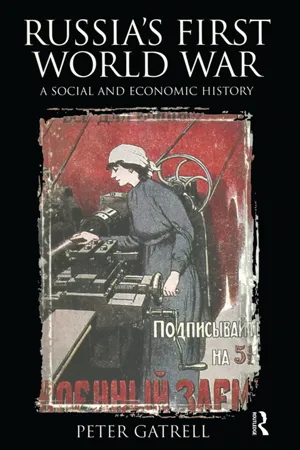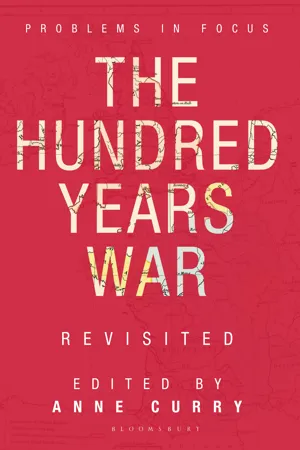History
Financing the War
"Financing the War" refers to the various methods and strategies used to fund military operations during times of conflict. This can include government borrowing, taxation, issuing war bonds, and printing money. The ability to effectively finance a war can have significant impacts on a nation's economy and its ability to sustain the conflict over time.
Written by Perlego with AI-assistance
Related key terms
Related key terms
1 of 4
Related key terms
1 of 3
4 Key excerpts on "Financing the War"
- eBook - ePub
- Antonín Basch(Author)
- 2021(Publication Date)
- Routledge(Publisher)
The magnitude of expenditures attendant upon the organization of war economies has changed the character of war financing, but has also increased our knowledge. Money has become an instrument of financing, a transportation medium; no country will permit itself to lose a war because of financial difficulties. One comes to think in terms of real economy with primary emphasis on securing the necessary supply of goods and services —once this is assured, the necessary financial mechanism is to be provided. Of course this mechanism must be organized in such a way as to facilitate the satisfying of war needs and to avoid disturbances. The volume of a war budget is a clear indication of the position of the state; the state which previous to this war was absorbing —especially in Europe—a strikingly greater part of national income must now influence in ever greater degree the whole economic life. Financial policy becomes integrated in the whole economic war strategy, views which are merely budgetary being too narrow and limited to be accommodated to the general task.The first concern of the financial policy must be to obtain that part of the national income which is needed for the prosecution of the war, in a manner which disturbs economic life as little as possible. Consumption must be adjusted and the level of prices and incomes managed so as to avoid inflation and profiteering. Financial policy thus merges with price and income policies and with control of the capital market, and all are related to the main task of meeting war expenses, and of achieving balances between production and consumption and between military and civilian consumption. No separate budget is possible, since all measures must be fully integrated in the general economic plan.The experiences of the last war have led to the most serious attempts by all nations to avoid inflation, which for our purpose we understand as a rise in the level of prices, making no distinction between a rise in the level of prices due primarily to monetary causes (inflation1 - eBook - ePub
Russia's First World War
A Social and Economic History
- Peter Gatrell(Author)
- 2014(Publication Date)
- Routledge(Publisher)
CHAPTER 6 Paying for the war, Russian styleAfter the war the system of government credit will sink ever firmer roots in the soil of the people.[Aleksei Shingarev, quoted in Strakhov, 2003, p. 39]I n the apt words of a leading authority on English banking, ‘financial policy is never a strong candidate for the attention of the man in the street, and in time of war it has spectacular rivals for the scanty newspaper space’.1 Certainly the reading public in tsarist Russia was fed a diet of military and political propaganda, while financial matters – with the important exception of publicity given to war loans – were largely confined to the trade press. Behind the scenes, however, vital issues of national security, political power and social welfare were being played out against the backdrop of state finance. Russia’s participation in an international coalition ensured that the chief players in this drama included British and French (and, later on, American) officials, advisers and financial magnates. This chapter seeks to integrate technical yet vital details of war finance with the broader political and social dynamics.The budget deficit – the gap between government revenue and expenditure – could be financed either by incurring domestic debt (long-term and short-term) or by recourse to overseas borrowing, and by an expansion of the money supply. The tsarist government resorted to extensive borrowing during the war. Borrowing had an important political dimension, because creditors needed to be convinced that their investment was safe. A government perceived to be weak or to be devoting little attention to post-war financial viability would suffer in the unforgiving marketplace for loans. Tsarist Russia confronted precisely that difficulty during the war against Japan and the revolution of 1905. At the outbreak of war, key questions arose in respect of domestic borrowing. By what means could the Russian population be persuaded of the need to save? How much emphasis could be placed upon an appeal to patriotism? To what extent would Russia be able to call upon financial assistance from the Allies? - eBook - ePub
- Anne Curry, Anne Curry(Authors)
- 2019(Publication Date)
- Bloomsbury Academic(Publisher)
3 Financing the Hundred Years WarTony K. Moore and Adrian R. BellCicero’s dictum that ‘money is the sinews of war’ was well understood in the Middle Ages and only became more relevant as state capacity increased from the thirteenth century onwards in both England and France, driven by the pressures of interstate competition.1 In particular, the English kings needed to mobilise the resources of their kingdom effectively in order to compete with the larger and wealthier French kingdom.2 This chapter will consider three key aspects of the financing of military activity. First, it will gauge the scale of royal financial resources in the two countries and how these changed during the period. Second, it will consider how kings raised this money. Third, it will investigate how this money was transferred to where (and, vitally, when) it was needed, introducing the key role played by financial intermediaries, with special reference to England.It is difficult to reconstruct reliable estimates for royal revenues over time and between countries. As a result, some previous studies have preferred to consider the subjective experience of taxation.3 This chapter argues, however, that it is still useful to develop rough quantitative figures to facilitate comparison of the relative scale of resources available to English and French kings. The options chosen here are either to consider revenues in relation to contemporary Gross Domestic Product (GDP; the monetary value of all goods and services produced in a given country per year), where modern reconstructions are available, or to convert currencies into their silver equivalents based on the precious metal content of the coin.4 - eBook - ePub
- Susan Howson(Author)
- 2013(Publication Date)
- Routledge(Publisher)
Appendix I are designed to discuss the purposes and the logical methods of this financial analysis. Appendix II contains a list of the figures which would be necessary to carry out this analysis. It will not be possible to obtain all the desired statistical data; and for the preparation of any final document reliance will have to be placed upon the limited amount of data actually available. The scheme of analysis is, however, presented in its complete form for two purposes: to illustrate the method of analysis to be adopted and to ensure that no relevant data which are in fact available are inadvertently overlooked.The analysis of war finance can be divided, broadly speaking, into three main divisions. The first (discussed in Section I and Tables A to D ) is concerned with the ultimate sources' from which the necessary sums can be raised (e.g. from taxation, personal and institutional savings, the sale of assets abroad, etc.). The second (discussed in Section II and Tables E to I ) is concerned with the monetary and banking problems (or alternatively the problems of ‘liquidity’) which are involved in this financing of war expenditure.A simple illustration may suffice at this point to draw a rough distinction between these two types of problem. An increase in personal savings out of a given level of personal incomes, by reducing expenditure upon consumption goods, will release labour, equipment and raw materials from the production of such goods; these released factors can be absorbed into the war effort by means of increased expenditure from the Budget for war purposes; and the finance of this increased defence expenditure can be raised by Government borrowing of the increased personal savings. In this sense, personal savings provide one ‘ultimate source’ of war finance. But the form in which individuals wish to hold their increased savings raises a further set of monetary problems. If the increased savings are used directly by the savers for the purchase of Government securities, the Government has merely to issue new securities to these persons to obtain the finance for its defence expenditure; if, on the other hand, the savers wish to accumulate additional deposits out of their increased savings, the Government must issue securities of a kind which the banks will be willing to hold as an asset against the additional bank deposits created to satisfy the savers’ desire for liquid funds. Thus, in addition to finding ‘ultimate sources’ for the finance of its expenditure, the Government must adopt a debt policy, and the banks must adopt a monetary policy, appropriate to the ‘liquidity’ desires of the market.
Index pages curate the most relevant extracts from our library of academic textbooks. They’ve been created using an in-house natural language model (NLM), each adding context and meaning to key research topics.
Explore more topic indexes
Explore more topic indexes
1 of 6
Explore more topic indexes
1 of 4



